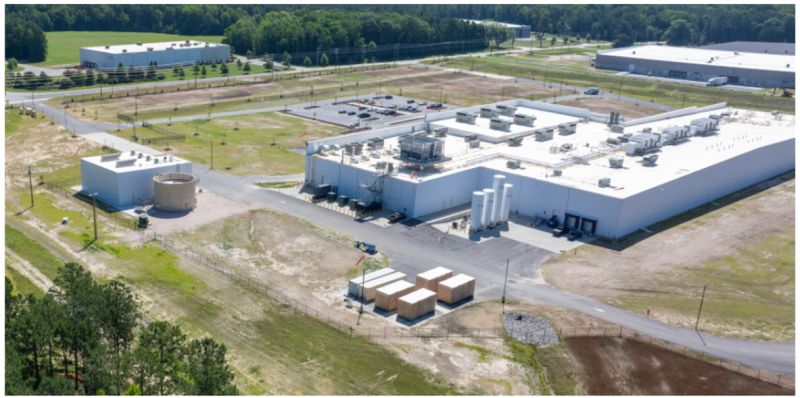

Meat consumption is rising – but not in the way you think
It’s no surprise that meat consumption has been steadily rising for some time now. For about as long as Sentient Media has been tracking it, the food system has been shifting to more feed crops such as soy and corn, more farm animals and more chicken wings and chops on dinner tables. With the re-release of his book Animal Liberation in 2023, the philosopher Peter Singer pointed out, again, that US meat consumption has increased 24% since 1975. But these facts, though they may be true, are not the whole story. It’s a common story: as the USA became wealthier, food became cheaper and meat consumption ticked steadily upward. Data from the US Department of Agriculture (USDA) backs that up: raw meat production has more than doubled since 1970. But it turns out that how much meat we eat in the USA may no longer be on the rise at all. Here’s why...
The amount of meat we produce each year is definitely going up, but that doesn’t mean Americans are actually eating more and more of the stuff. Thanks to our growing population, our meat consumption has only increased by 17% per capita between 1970 and 2022. An increase, sure, but a more modest one than the figure Singer cites.
Here’s what’s going on. These numbers only take into account 'production' – the amount of meat coming from slaughterhouses – and 'disappearance' – the amount of meat available for sale in the country, minus exports. In other words, this is an approximation of supply and demand, respectively.
What’s missing then is the two places the meat can end up that is not your plate – your pets’ bellies or your trash can. Neither of which is tracked by the US Department of Agriculture.
There are nearly 140 million pets in the USA alone, and what we feed them has a massive cost, both in terms of the environment and farm animals killed.
According to a 2020 industry report from three pet food and rendering companies, the pet food industry uses 5.1 million tons of meat for their products each year, which is the equivalent of around 2 billion farm animals, mostly chicken and fish. That’s nearly 10% of all meat produced in the USA, which is not insignificant.
Food waste is also part of the problem, despite the widespread agreement that taking steps to waste less food is one of the most impactful forms of climate action, other than eating less meat. Precise numbers are difficult to tally. But in 2010, the USDA estimated the amount of food wasted in various stages, finding that 25% of retail meat and 39% of seafood ends up in the trash bin, primarily at the consumer level – either in restaurants or the garbage in homes. That’s over 15 billion pounds of animal products – and that’s before you add in the 25 billion pounds of dairy and 3 billion pounds of eggs.
Taking all this data into account, suddenly the amount of meat the average American consumes falls dramatically – about 10% scarfed down by our furry friends and 13% rotting in landfills.
To make matters worse, both numbers are soaring – we’re feeding more pets more meat, and we’re barely budging on food waste.
Estimated pet food production has increased from 8 million metric tons in 2012 to 10.4 million metric tons in 2022 – a 30% increase over just 10 years, and most of that likely in the form of meat. It’s even worse on a global scale – a 72% increase over the same time span.
According to Sentient Media's best estimates, our food waste problem is only growing – and again, this is despite universal agreement on the climate cost of wasted food. Between 2016 and 2021, overall food waste ticked up by about 4 billion tons, with wasted meat increasing by over 8% in that time frame.
Meat production jumped 14.9% from 2010 to 2020, but the amount of meat we humans actually consumed per capita only increased 10.9% if we include food waste and pet food in our calculations. So Americans are eating more meat, but it’s not as drastic an increase as the raw numbers show.
Whether we actually eat the meat or not, we’re still stuck with the same downsides. And these impacts are devastating: an extra three billion hectares of land razed for livestock and several gigatonnes of carbon dioxide and methane pumped into the atmosphere. We’re also killing more animals now than ever before – from around 2 billion a year in 1960 to just under 10 billion this year. And it’s easy to see why: cheap chicken.
The amount of chicken we consume is so staggering that when we compare it to all other species of farm animals, the rest are barely visible. We now slaughter over 9 billion chickens a year, about 6.2 times the slaughter rate in 1960. This is sometimes called the ‘small body problem’ — by swapping out beef and pork for chicken, we are causing far more animals to die, because more chickens need to be killed to supply the same amount of meat. Yet the welfare conditions for chickens are far worse than cows raised as beef — the birds live shorter lives, are bred to grow larger bodies that their legs can’t support and suffer higher incidence of diseases like avian flu.
But the economics of chicken are indisputable. “Chicken is hard to compete with,” said Dan Blaustein-Retjo, a researcher at the climate-oriented Breakthrough Institute, adding that chicken consumption isn’t predicted to go down anytime soon.
Many so-called 'climavores' or 'climatarians' argue for replacing beef and pork with chicken to reduce the greenhouse gas emissions from their dinner plates. And while this helps to some degree – although not as much as replacing red meats with plant proteins – this guidance is a disaster for animal welfare.
Here’s yet another wrinkle. When we take a closer look at who is eating the most meat, it becomes clear that consumption isn’t spread out equally across the USA. According to a 2018 survey, nearly a quarter of Americans pass on certain types of meat each week, while a relatively small part of the population will consume it nearly every day.
When it comes to beef, the stats are even starker. Just 12% of all Americans are responsible for half of US beef consumption — and these meat-lovers are more likely to be male, and slightly more likely to be white or not a college graduate.
This trend has held steady for the past two decades. A study from 2003 found that women, the young, the old and college-educated Americans were less likely to consume large amounts of meat.
One key shift: white men today are far more likely to eat lots of meat than in 2003, but the opposite is now true for Black men, even though both of these groups were eating at average levels some two-decades ago. It’s tough to pinpoint an exact cause for this gap but one explanation might be that the huge shift toward veganism in Black communities. At the same time, it’s become increasingly common for white men who follow far-right political ideologies to wield meat as a symbol of their masculinity, and their alignment in the culture wars.
In contrast, younger generations have demonstrated far more interest in meat reduction. Millennials and Gen Z are more likely to care about their food’s environmental impact than older generations, and even to follow a low-meat diet, like vegan, vegetarian or flexitarian.
No matter where the meat goes, the downside is we’re still bearing the brunt of the impacts – including more wild and farm animal suffering, deforestation and climate pollution. But who and what is actually driving consumption does matter, in fact, especially if we want to curb those impacts.
There is some good news here. Climate research groups such as the World Resources Institute have been urging us to eat less meat for years now, and there’s at least some evidence that people in the USA are probably eating less meat overall.
It’s also clear that we have to address the other forces fueling meat consumption – pets and food waste. But there is at least research pointing the way forward. Several studies show that dogs don’t need meat to thrive for instance, (in fact, they may even live longer without it) and some cursory research even points to healthier outcomes for vegan cats as well. It’s still early days for pet food alternatives, but it’s at least possible to produce pet food with the right nutrition profile, down to the synthetic taurine that cats need.
Food waste remains a tricky problem to solve. Despite the lack of controversy – at least compared to the meat culture wars – it’s only grown worse in the past five years. In the USA, where farming is pretty efficient, most food is wasted at the consumer level – whether that be in grocery stores, households, restaurants or cafeterias. Some of the simpler recommendations include phasing out useless 'sell-by' dates and increasing food rescue efforts, shifts that could be achieved through policy change.
Research also suggests that meat consumption in the USA could start to drop off in the next decade or so, though this depends on getting a few factors right. One prediction puts peak meat consumption at 2035 if plant-based meats come down in price this year (unlikely to happen at this point) while FAO researchers argue that a peak in the 2030s can only occur if governments prioritize sustainability. If it’s business as usual, we’re set back a full decade.
For now, the USDA predicts an increase of just 4% between 2022 and 2030, driven almost exclusively by chicken consumption. That’s a far cry from the 15.7% growth of the previous decade.
Some good news: two potential indicators suggest that the USA might hit 'peak meat' soon, according to Blaustein-Retjo: an uptick in plant-based meals in restaurants (not supermarkets) and decreased meat consumption in countries where plant-based alternatives have reached price parity.
We’re already seeing glimmers of the first: the plant-based industry is doing better in restaurants than in supermarkets. And the second has already happened in countries that have reached price parity. Sweden, the UK and Germany have some of the smallest price premiums of plant-based proteins, while the Netherlands reached price parity last year. All of these countries have already hit 'peak meat'. In fact, the EU predicts that Europe, where alternative proteins are thriving, will decrease its overall consumption of meat by the end of the decade.
In the USA, we’ll likely reach full price parity between 2027 and 2030, which means meat consumption should start leveling off in this decade, and hit its peak in the next one.
Still, Breakthrough’s Blaustein-Retjo adds a note of caution. For true meat reduction, especially chicken reduction, we’d need to see some sort of external force: a methane or meat tax, reduced subsidies for animal agriculture or maybe an unexpected increase in feed cost, for instance.
But more likely, it’ll come from meat alternatives. “The US agricultural system has historically relied on carrots, not sticks,” he said. Those carrots are likely to be cheap plant-based meat, hybrid meat products, cultivated meat pet food, or hefty government investments into agricultural research. The bottom line: before we can reach 'peak meat' here in the USA, one or more of these is needed.
Click here to see the original article, with acknowledgement to Sentient Media
If you have any questions or would like to get in touch with us, please email info@futureofproteinproduction.com






